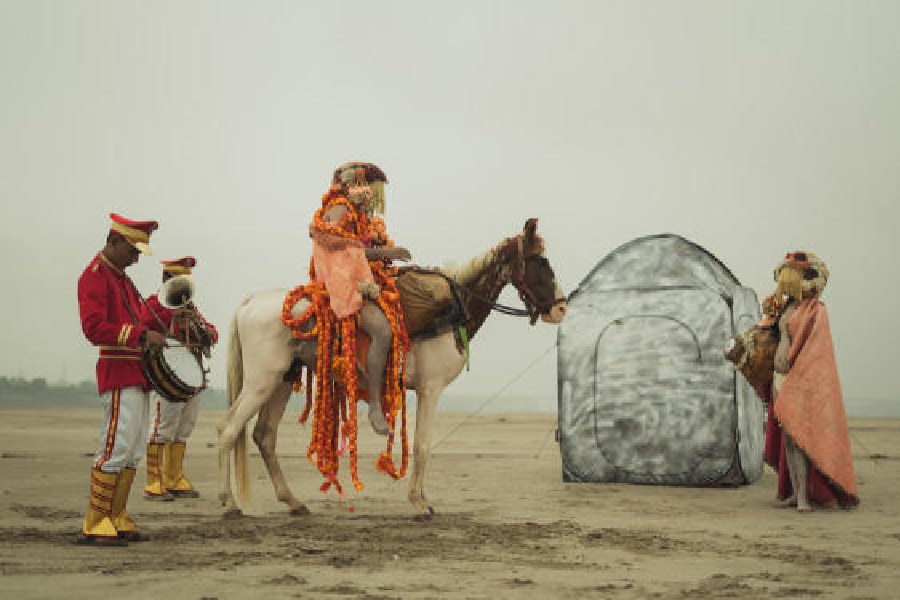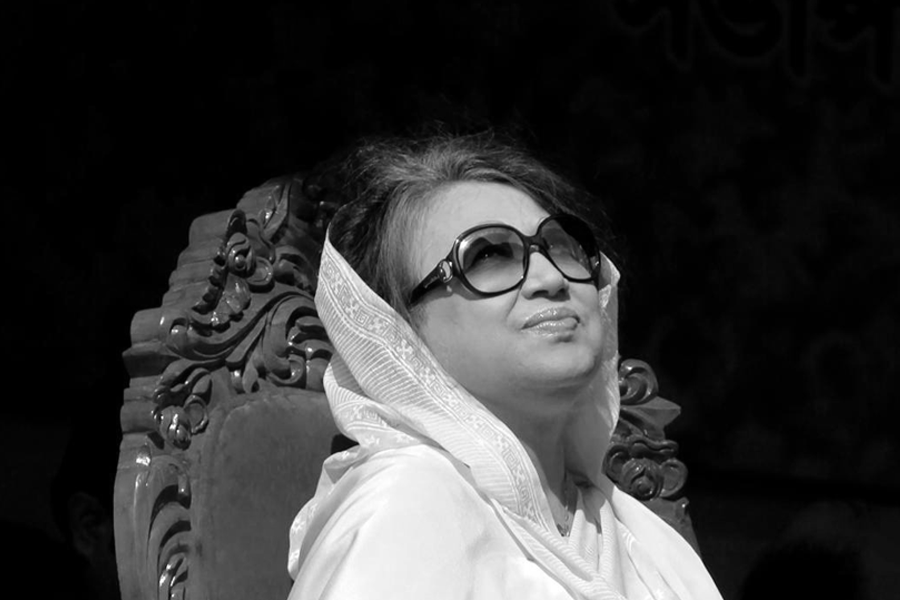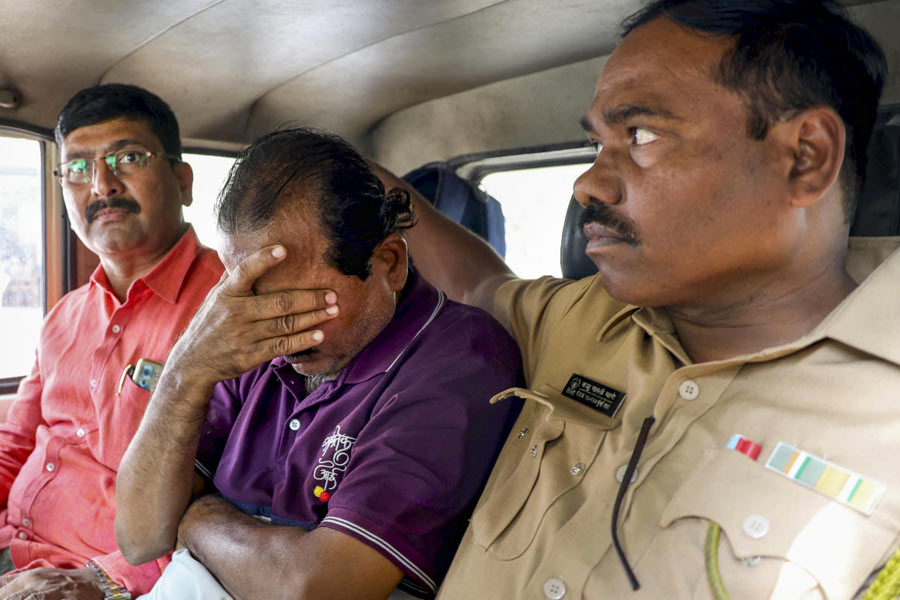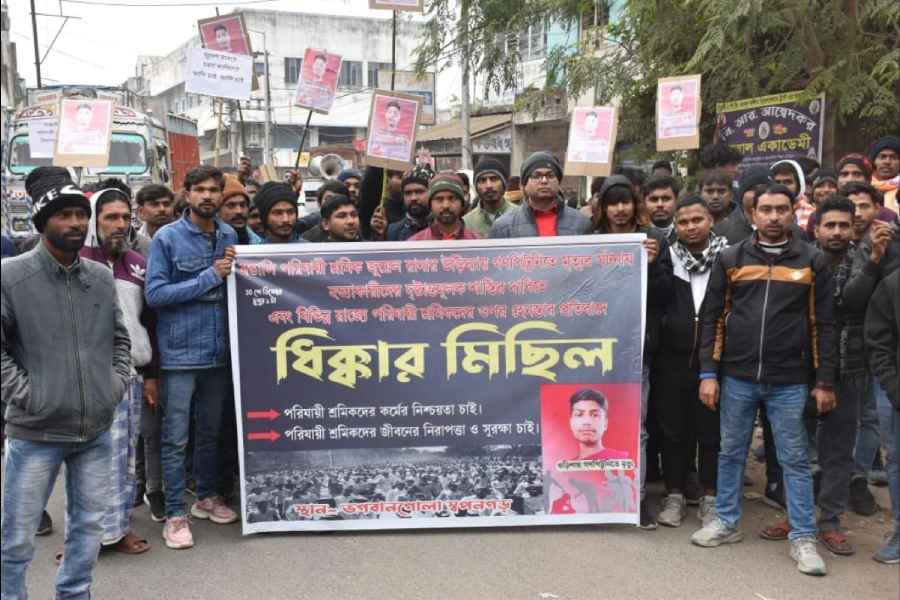The city of Benares has a profound influence on Debashish Paul, a 30-year-old multi-disciplinary artist. The film A Thousand Years of Dreaming, a part of Paul’s solo eponymous exhibition, was shot there. It does not show either the famed ghats or the characteristic lanes and bylanes, or even the temples galore. Paul, a contemporary queer artist, shot his film on the other side of the Ganga, barren and stark, where earth and water intermingle in a vast expanse of nothingness.
Paul is clearly uncomfortable under the arc lights of a formal talk at the art gallery in Calcutta where his exhibition was being hosted. He speaks softly, haltingly into a microphone. “Ami Bangla te bolte pari?... May I speak in Bengali?”
Paul has been working as an artist for over four years since 2020. Born in 1994, he finished high school in Nadia and came to Calcutta to study fine arts and graduated from the Indian College of Art and Draftsmanship before joining Banaras Hindu University for his master’s in fine arts. But it was the folk culture, the jatra, pala gaan, the gajan and kirtan of Nadia that inspired him more than anything else.
These performative folk art forms led him to use performative art as one of the mediums to express himself. Paul often played female roles in jatra groups in Phulia.
“I am from the land of tangail, so art is ingrained in me. I am also from the land of Sri Chaitanya, who is half Radha half Krishna. I was inspired by the concept of ardhanariswar,” he says while quoting from a Shyama Sangeet “Tumi purush ki nari, bujhite nari”. Tangail is a weave typical to Bengal.
Paul’s father was from Kushtia district in Bangladesh from where he crossed over during the 1971 war The family has traditionally produced idol makers. “My father would make me earthen dolls which I loved. I too learnt to make them. I was good at art and my father encouraged it. But when I grew up he wanted me to be an engineer,” says Paul.
It was during his middle school years that Paul became aware of his sexual orientation. The next few years he learnt to come to terms with it, as an individual and as a social being.
In Benares, he found solace. He says, “It is one strange city. There is death, there is also birth, and there is celebration — all happening on the same platform. They play Holi at the same ghats where they also cremate the dead.” He continues, “I felt a spiritual freedom here. My queer body, my inherent feminine traits trapped in a male body, found happiness in Benares. The playfulness of the city, its dual character, all of it attracted me. I started documenting all this.”
When asked why he uses video performance as one of the mediums of his art, Paul says, “I perform to answer the very questions that my queer body asks.”
He performs in elaborate costumes that he makes himself from various kinds of materials he collects. For the show A Thousand Years of Dreaming, his costumes were in vibrant red with a lot of silken threads and patterns of eyes.
“Costume is like my second skin. While I was in school, I used to get teased regularly for my feminine traits. I felt all eyes were on me. My skin would ask for acceptance. The eyes represent fear, dread and also a quest for acceptance,” says Paul.
The use of the colour red in his installations and costumes was apparently to attract attention and also to echo the shades of Benares. He says, “The deities, the temples are covered in red and orange. These are also vibrant colours and in their midst, there are the eyes with their black and white. Together they create drama.”
Asked why religion is so central to his work, and why he uses it as a backdrop for a queer theme, Paul says, “Religion has come into my work naturally. I come from Nadia, a religious town, there is always a puja somewhere. Benares is also a religious place, the tolling of bells, the fragrance of flowers, the colours of religion... I cannot divorce myself from religion. Religion helps me live through my transformations.”










